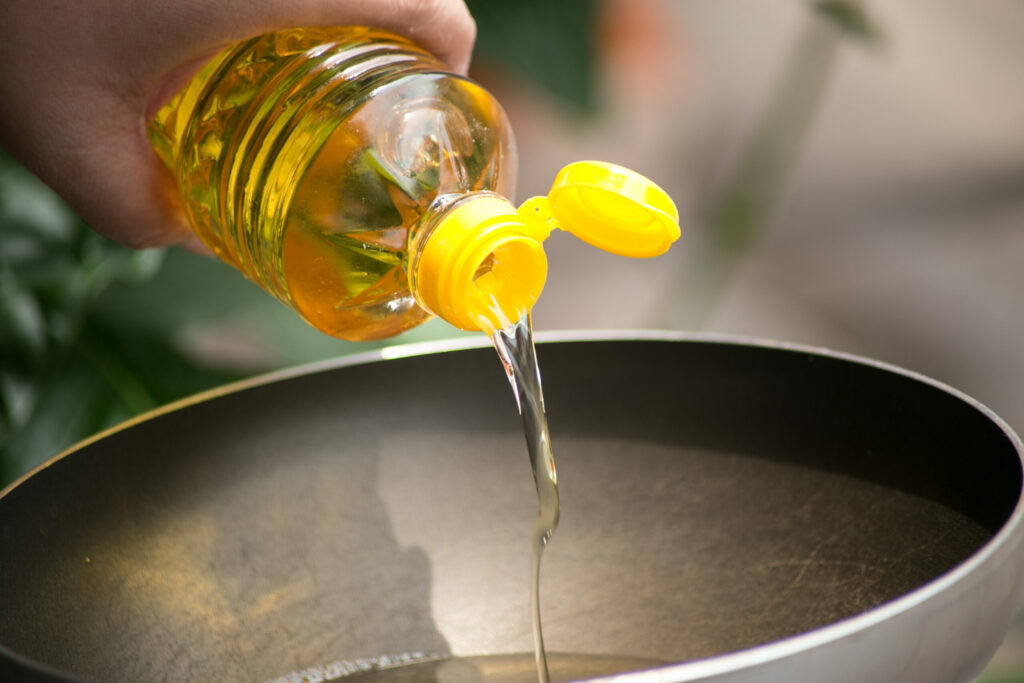Introduction:
Hydrogenated vegetable oil is a commonly used ingredient in the food industry. It is created through a process called hydrogenation, in which hydrogen gas is added to liquid vegetable oil to make it more solid and increase its shelf life. While hydrogenated vegetable oil has been widely used in the past, concerns have been raised about its impact on health. This comprehensive guide aims to explore the uses, downsides, and food sources of hydrogenated vegetable oil.
I. Uses of Hydrogenated Vegetable Oil:
Hydrogenated vegetable oil is primarily used as a food ingredient due to its desirable properties. Some common uses include:
- Food Manufacturing: Hydrogenated vegetable oil is used extensively in the manufacturing of processed foods. It helps enhance the texture, stability, and flavor of various products such as baked goods, confectioneries, margarine, and snack foods.
- Shelf Life Extension: One of the main reasons for hydrogenating vegetable oil is to increase its shelf life. This makes it suitable for products that require a longer shelf life, such as packaged snacks and spreads.
- Texture and Stability: Hydrogenated vegetable oil provides a creamy texture and enhances the stability of products. It is often used in frostings, icings, and fillings to maintain their consistency and prevent separation.
II. Downsides of Hydrogenated Vegetable Oil:
While hydrogenated vegetable oil offers certain advantages in food manufacturing, it also poses several downsides, mainly related to its trans fat content. Here are some notable concerns:
- Trans Fats: The hydrogenation process results in the formation of trans fats, which are considered harmful to health. Trans fats have been linked to an increased risk of heart disease, stroke, and other cardiovascular problems. They also raise levels of LDL cholesterol (bad cholesterol) while lowering HDL cholesterol (good cholesterol).
- Inflammation and Chronic Diseases: Consuming trans fats, including those present in hydrogenated vegetable oil, can lead to chronic inflammation within the body. Chronic inflammation has been associated with various conditions, including obesity, diabetes, and certain types of cancer.
- Negative Impact on Cholesterol Profile: Trans fats have a detrimental effect on the balance of different types of cholesterol in the body. They raise levels of LDL cholesterol, which can contribute to the development of atherosclerosis and cardiovascular disease.
III. Food Sources of Hydrogenated Vegetable Oil:
Hydrogenated vegetable oil can be found in a wide range of processed foods. Here are some common sources:
- Packaged Snacks: Many packaged snacks, such as chips, crackers, and cookies, contain hydrogenated vegetable oil to extend their shelf life and improve texture.
- Margarine and Shortening: Hydrogenated vegetable oil is often used in the production of margarine and shortening, providing them with a solid consistency and a longer shelf life.
- Baked Goods: Many commercially produced baked goods, including pastries, cakes, and bread, contain hydrogenated vegetable oil to enhance texture and increase shelf stability.
- Fried Foods: Some fast food chains and restaurants use hydrogenated vegetable oil for deep frying, as it has a high smoke point and helps maintain the stability of frying oils.
IV. Healthier Alternatives and Labeling:
Given the downsides associated with hydrogenated vegetable oil, it is important to consider healthier alternatives and be mindful of food labeling. Here are some tips:
- Choose Unhydrogenated Oils: Opt for oils that have not undergone hydrogenation, such as olive oil, coconut oil, avocado oil, or other unrefined vegetable oils. These oils are healthier options and do not contain trans fats.
- Read Food Labels: Check the ingredient list of processed foods for the presence of hydrogenated vegetable oil or trans fats. Look for products labeled “trans fat-free” or “zero trans fats” to ensure a lower intake of harmful fats.
- Home Cooking: When cooking or baking at home, use healthier oils and fats, such as olive oil, canola oil, or butter. These options provide better nutrition profiles compared to hydrogenated vegetable oil.
Conclusion:
Hydrogenated vegetable oil, despite its widespread use in the food industry, has significant downsides due to its trans fat content. The consumption of trans fats has been linked to numerous health issues, including heart disease and inflammation. It is crucial to be aware of the sources of hydrogenated vegetable oil and make informed choices by opting for healthier alternatives and reading food labels carefully. By doing so, individuals can reduce their intake of trans fats and promote better overall health.
- Sip & Chill: Exploring Melo’s THC Beverage Wonderland - May 17, 2024
- Benefits of Guaysa Supplements - April 1, 2024
- Benefits of Graviola Supplements - April 1, 2024

